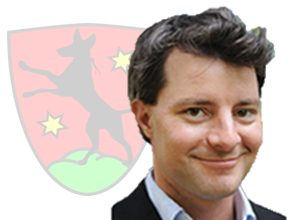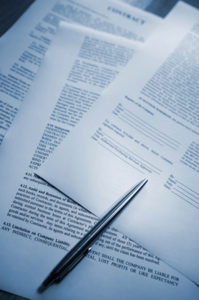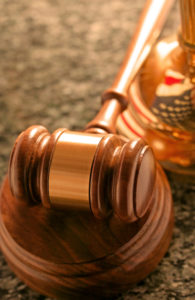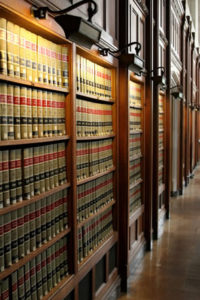Patent Attorney in Denver and Boulder, Colorado
Patent Lawyer Services
Patent law is primarily federal law, as such, the law firm of Hunziker Legal Services is happy to provide attorney services to those clients that come from around the world by phone, fax, letter, and email. If you live in any of the following areas you may also come to my Denver or Boulder, Colorado office to meet me in person, my patent law firm is located in Colorado close to: Denver, Boulder, Fort Collins, Loveland, Longmont, Broomfield, Westminister, Arvada, Northglenn, Thornton, Centennial, Lakewood, Brighton, Berkley, Aurora, Columbine, Commerce City, Englewood, Federal Heights, Golden, Greenwood Village, Highlands Ranch, Littleton, Parker, Sheryl Wood, Welby, and Wheat Ridge..
I offer the following services:
- Patent Searching
- Patent Drawings
- Provisional Patent Applications
- Utility Patents
- Software and Business Method Patent Applications
- Chemical and Biological Patent Applications
- Foriegn and PCT Patent Applications
- Design Patent Applications
- Plant Patent Applications
- Correction of Patents and Reissue Patent Applications
- Office Actions
- Interferences
- Appeals
- Patent Maintenance
- Patent Licensing and Assignments
- Patent Enforcement and Litigation
- Patent Opinions and Consultation
- Patent FAQ’s
- Patent Fees
Utility Patents
There are various types of patents — utility, design, and plant. There are also two types of utility and plant patent applications — provisional and nonprovisional. Each year the USPTO receives approximately 350,000 patent applications. Most of these are for nonprovisional utility patents.
A utility patent is a type of property right that gives the patent holder the right, for up to 20 years from your filng date, to exclude others from making, using, offering to sell, selling, or importing into the United States the subject matter that is within the scope of protection granted by the patent.
The patent law specifies the general field of subject matter that can be patented and the conditions under which a patent may be obtained.
In the language of the statute, any person who “invents or discovers any new and useful process, machine, manufacture, or composition of matter, or any new and useful improvement thereof, may obtain a patent,” subject to the conditions and requirements of the law. The word “process” is defined by law as a process, act or method, and primarily includes industrial or technical processes. The term “machine” used in the statute needs no explanation. The term “manufacture” refers to articles that are made, and includes all manufactured articles. The term “composition of matter” relates to chemical compositions and may include mixtures of ingredients as well as new chemical compounds. These classes of subject matter taken together include practically everything that is made by man and the processes for making the products.
Conditions For Obtaining A Patent: Novelty And Non-Obviousness
In order for an invention to be patentable it must be new as defined in the patent law, which provides that an invention cannot be patented if: “(a) the invention was known or used by others in this country, or patented or described in a printed publication in this or a foreign country, before the invention thereof by the applicant for patent,” or “(b) the invention was patented or described in a printed publication in this or a foreign country or in public use or on sale in this country more than one year prior to the application for patent in the United States . . .”
If the invention has been described in a printed publication anywhere in the world, or if it was known or used by others in this country before the date that the applicant made his/her invention, a patent cannot be obtained. If the invention has been described in a printed publication anywhere, or has been in public use or on sale in this country more than one year before the date on which an application for patent is filed in this country, a patent cannot be obtained. In this connection it is immaterial when the invention was made, or whether the printed publication or public use was by the inventor himself/herself or by someone else. If the inventor describes the invention in a printed publication or uses the invention publicly, or places it on sale, he/she must apply for a patent before one year has gone by, otherwise any right to a patent will be lost. The inventor must file on the date of public use or disclosure, however, in order to preserve patent rights in many foreign countries.
Even if the subject matter sought to be patented is not exactly shown by the prior art, and involves one or more differences over the most nearly similar thing already known, a patent may still be refused if the differences would be obvious. The subject matter sought to be patented must be sufficiently different from what has been used or described before that it may be said to be nonobvious to a person having ordinary skill in the area of technology related to the invention. For example, the substitution of one color for another, or changes in size, are ordinarily not patentable.
Requirements for Utility Patent Applications
A non-provisional application for a utility patent includes:
- A written document which comprises a specification (description and claims), and an oath or declaration;
- A drawing in those cases in which a drawing is necessary; and
- Filing, search, and examination fees.
The specification must include a written description of the invention and of the manner and process of making and using it, and is required to be in such full, clear, concise, and exact terms as to enable any person skilled in the technological area to which the invention pertains, or with which it is most nearly connected, to make and use the same.
The specification must set forth the precise invention for which a patent is solicited, in such manner as to distinguish it from other inventions and from what is old. It must describe completely a specific embodiment of the process, machine, manufacture, composition of matter, or improvement invented, and must explain the mode of operation or principle whenever applicable. The best mode contemplated by the inventor for carrying out the invention must be set forth.
In the case of an improvement, the specification must particularly point out the part or parts of the process, machine, manufacture, or composition of matter to which the improvement relates, and the description should be confined to the specific improvement and to such parts as necessarily cooperate with it or as may be necessary to a complete understanding or description of it.
The specification must conclude with a claim or claims particularly pointing out and distinctly claiming the subject matter which the applicant regards as the invention. The portion of the application in which the applicant sets forth the claim or claims is an important part of the application, as it is the claims that define the scope of the protection afforded by the patent and which questions of infringement are judged by the courts.
Publication and Provisional Rights
Publication occurs after the expiration of an 18-month period following the earliest effective filing date or priority date claimed by an application. Following publication, the application for patent is no longer held in confidence by the Office and any member of the public may request access to the entire file history of the application.
As a result of publication, an applicant may assert provisional rights. These rights provide a patentee with the opportunity to obtain a reasonable royalty from a third party that infringes a published application claim provided actual notice is given to the third party by applicant, and a patent issues from the application with a substantially identical claim. Thus, damages for pre-patent grant infringement by another are now available.
Patent Marking and Patent Pending
A patentee who makes or sells patented articles, or a person who does so for or under the patentee is required to mark the articles with the word “Patent” and the number of the patent. The penalty for failure to mark is that the patentee may not recover damages from an infringer unless the infringer was duly notified of the infringement and continued to infringe after the notice.
The marking of an article as patented when it is not in fact patented is against the law and subjects the offender to a penalty. Some persons mark articles sold with the terms “Patent Applied For” or “Patent Pending.” These phrases have no legal effect, but only give information that an application for patent has been filed in the USPTO. The protection afforded by a patent does not start until the actual grant of the patent. False use of these phrases or their equivalent is prohibited.
Infringement of Patents
Infringement of a patent consists of the unauthorized making, using, offering for sale, or selling any patented invention within the United States or U.S. Territories, or importing into the United States of any patented invention during the term of the patent. If a patent is infringed, the patentee may sue for relief in the appropriate federal court. The patentee may ask the court for an injunction to prevent the continuation of the infringement and may also ask the court for an award of damages because of the infringement. In such an infringement suit, the defendant may raise the question of the validity of the patent, which is then decided by the court. The defendant may also aver that what is being done does not constitute infringement. Infringement is determined primarily by the language of the claims of the patent and, if what the defendant is making does not fall within the language of any of the claims of the patent, there is no literal infringement.
The USPTO has no jurisdiction over questions relating to infringement of patents. In examining applications for patent, no determination is made as to whether the invention sought to be patented infringes any prior patent. An improvement invention may be patentable, but it might infringe a prior unexpired patent for the invention improved upon, if there is one.
Correction of Patents and Reissue Patent Applications
Once the patent is granted, it is outside the jurisdiction of the USPTO except in a few respects. The Office may issue without charge a certificate correcting a clerical error it has made in the patent when the printed patent does not correspond to the record in the Office. These are mostly corrections of typographical errors made in printing. Some minor errors of a typographical nature made by the applicant may be corrected by a certificate of correction for which a fee is required. The patentee may disclaim one or more claims of his/her patent by filing in the Office a disclaimer as provided by the statute.
When the patent is defective in certain respects, the law provides that the patentee may apply for a reissue patent. Following an examination in which the proposed changes correcting any defects in the original patent are evaluated, a reissue patent would be granted to replace the original and is granted only for the balance of the unexpired term. However, the nature of the changes that can be made by means of the reissue are rather limited; new matter cannot be added. In a different type of proceeding, any person may file a request for reexamination of a patent, along with the required fee, on the basis of prior art consisting of patents or printed publications. At the conclusion of the reexamination proceedings, a certificate setting forth the results of the reexamination proceeding is issued.
Office Actions
The applicant is notified in writing of the examiner’s decision by an Office “action” which is normally mailed to the attorney or agent of record. The reasons for any adverse action or any objection or requirement are stated in the Office action and such information or references are given as may be useful in aiding the applicant to judge the propriety of continuing the prosecution of his/her application.
If the claimed invention is not directed to patentable subject matter, the claims will be rejected. If the examiner finds that the claimed invention lacks novelty or differs only in an obvious manner from what is found in the prior art, the claims may also be rejected. It is not uncommon for some or all of the claims to be rejected on the first Office action by the examiner; relatively few applications are allowed as filed.
Restrictions
If two or more inventions are claimed in a single application, and are regarded by the Office to be of such a nature (e.g. independent and distinct) that a single patent should not be issued for both of them, the applicant will be required to limit the application to one of the inventions. The other invention may be made the subject of a separate application which, if filed while the first application is still pending, will be entitled to the benefit of the filing date of the first application. A requirement to restrict the application to one invention may be made before further action by the examiner.
Applicant’s Reply
The applicant must request reconsideration in writing, and must distinctly and specifically point out the supposed errors in the examiner’s Office action. The applicant must reply to every ground of objection and rejection in the prior Office action. The applicant’s reply must appear throughout to be a bona fide attempt to advance the case to final action or allowance. The mere allegation that the examiner has erred will not be received as a proper reason for such reconsideration.
In amending an application in reply to a rejection, the applicant must clearly point out why he/she thinks the amended claims are patentable in view of the state of the art disclosed by the prior references cited or the objections made. He/she must also show how the claims as amended avoid such references or objections. After reply by the applicant, the application will be reconsidered, and the applicant will be notified as to the status of the claims, that is, whether the claims are rejected, or objected to, or whether the claims are allowed, in the same manner as after the first examination. The second Office action usually will be made final.
Interviews with examiners may be arranged, but an interview does not remove the necessity of replying to Office actions within the required time.
Final Rejection
On the second or later consideration, the rejection or other action may be made final. The applicant’s reply is then limited to appeal in the case of rejection of any claim and further amendment is restricted. Petition may be taken to the Director in the case of objections or requirements not involved in the rejection of any claim. Reply to a final rejection or action must include cancellation of, or appeal from the rejection of, each claim so rejected and, if any claim stands allowed, compliance with any requirement or objection as to form. In making such final rejection, the examiner repeats or states all grounds of rejection then considered applicable to the claims in the application.
Amendments to Application
The applicant may amend the application as specified in the rules, or when and as specifically required by the examiner.
The specification, claims, and drawing must be amended and revised when required, to correct inaccuracies of description and definition or unnecessary words, and to provide substantial correspondence between the claims, the description, and the drawing. All amendments of the drawings or specification, and all additions thereto must not include new matter beyond the original disclosure. Matter not found in either, involving a departure from or an addition to the original disclosure, cannot be added to the application, and can be shown or claimed only in a separate application. No change in the drawing may be made except by permission of the Office.
Allowance and Issue of Patent
If, on examination of the application, or at a later stage during the reconsideration of the application, the patent application is found to be allowable, a Notice of Allowance and Fee(s) Due will be sent to the applicant, or to applicant’s attorney or agent of record, if any, and a fee for issuing the patent and if applicable, for publishing the patent application publication, is due within three months from the date of the notice. If timely payment of the fee(s) is not made, the application will be regarded as abandoned.
The patent grant is then delivered or mailed on the day of its grant, or as soon thereafter as possible. On the date of the grant, the patent file becomes open to the public for applications not opened earlier by publication of the application.
Interferences
Occasionally two or more applications are filed by different inventors claiming substantially the same patentable invention. The patent can only be granted to one of them, and a proceeding known as an “interference” is instituted by the Office to determine who is the first inventor and entitled to the patent. About one percent of the applications filed become involved in an interference proceeding. Interference proceedings may also be instituted between an application and a patent already issued, provided that the patent has not been issued, nor the application been published, for more than one year prior to the filing of the conflicting application, and provided also that the conflicting application is not barred from being patentable for some other reason.
Each party to such a proceeding must submit evidence of facts proving when the invention was made. In view of the necessity of proving the various facts and circumstances concerning the making of the invention during an interference, inventors must be able to produce evidence to do this. If no evidence is submitted a party is restricted to the date of filing the application as his/her earliest date. The priority question is determined by a board of three administrative patent judges on the evidence submitted. From the decision of the Board of Patent Appeals and Interferences, the losing party may appeal to the Court of Appeals for the Federal Circuit or file a civil action against the winning party in the appropriate United States district court.
The terms “conception of the invention” and “reduction to practice” are encountered in connection with priority questions. Conception of the invention refers to the completion of the devising of the means for accomplishing the result. Reduction to practice refers to the actual construction of the invention in physical form: in the case of a machine it includes the actual building of the machine, in the case of an article or composition it includes the actual making of the article or composition, in the case of a process it includes the actual carrying out of the steps of the process. Actual operation, demonstration, or testing for the intended use is also usually necessary. The filing of a regular application for patent completely disclosing the invention is treated as equivalent to reduction to practice. The inventor who proves to be the first to conceive the invention and the first to reduce it to practice will be held to be the prior inventor, but more complicated situations cannot be stated this simply.
Appeals
If the examiner persists in the rejection of any of the claims in an application, or if the rejection has been made final, the applicant may appeal to the Board of Patent Appeals and Interferences in the United States Patent and Trademark Office. An appeal fee is required and the applicant must file a brief to support his/her position. An oral hearing will be held if requested upon payment of the specified fee.
As an alternative to appeal, in situations where an applicant desires consideration of different claims or further evidence, a request for continued examination (RCE) or a continuation application is often filed.
If the decision of the Board of Patent Appeals and Interferences is still adverse to the applicant, an appeal may be taken to the Court of Appeals for the Federal Circuit or a civil action may be filed against the Director in the United States District Court for the District of Columbia. The Court of Appeals for the Federal Circuit will review the record made in the Office and may affirm or reverse the Office’s action. In a civil action, the applicant may present testimony in the court, and the court will make a decision.
Patent Maintenance
All utility patents are subject to the payment of maintenance fees which must be paid to maintain the patent in force. These fees are due at 3 1/2, 7 1/2 and 11 1/2 years from the date the patent is granted and can be paid without a surcharge during the “window-period” which is the six-month period preceding each due date, e.g., three years to three years and six months.
Failure to pay the current maintenance fee on time may result in expiration of the patent. A six-month grace period is provided after the “window-period” when the maintenance fee may be paid with a surcharge. The grace period is the six-month period immediately following the due date. The USPTO does not mail notices to patent owners that maintenance fees are due. If, however, the maintenance fee is not paid on time, efforts are made to remind the responsible party that the maintenance fee may be paid during the grace period with a surcharge.

About Will Hunziker
I am a patent and trademark attorney working in Boulder and Denver, Colorado where I provide cheap: patent, trademark, copyright, entertainment, corporate, business, and any other legal services you may require.
If you want a lawyer who answers your calls personally and charges a cheap rate, then you have found your man. I pride myself on the fact that each and every one of my clients gets the same zealous advocacy they can come to rely on again and again.

Contact Information
Hunziker Legal Services, PLLC.
A Professional Corporation
WillHunziker@gmail.com
Phone: (720) 310-0013
Fax: (720) 306-3017
Boulder Address:
1942 Broadway St. Suite 314
Boulder, CO 80302
Denver Address:

Geographic Regions of Practice:
Our lawyers and patent attorneys represent clients throughout Colorado; including residents of Boulder, Denver, Fort Collins, Loveland, Longmont, Broomfield, Westminister, Arvada, Northglenn, Thornton, Centennial, Lakewood, Brighton, Berkley, Aurora, Columbine, Commerce City, Englewood, Federal Heights, Golden, Greenwood Village, Highlands Ranch, Littleton, Parker, Sheryl Wood, Welby, and Wheat Ridge.






Use of HunzikerLegalServices.com the (‘Site’) is governed by the Site Usage Terms, use of the site constitutes acceptance of those Terms.
All rights reserved © 2007-18, Hunziker legal Services, PLLC
Site Usage Terms

